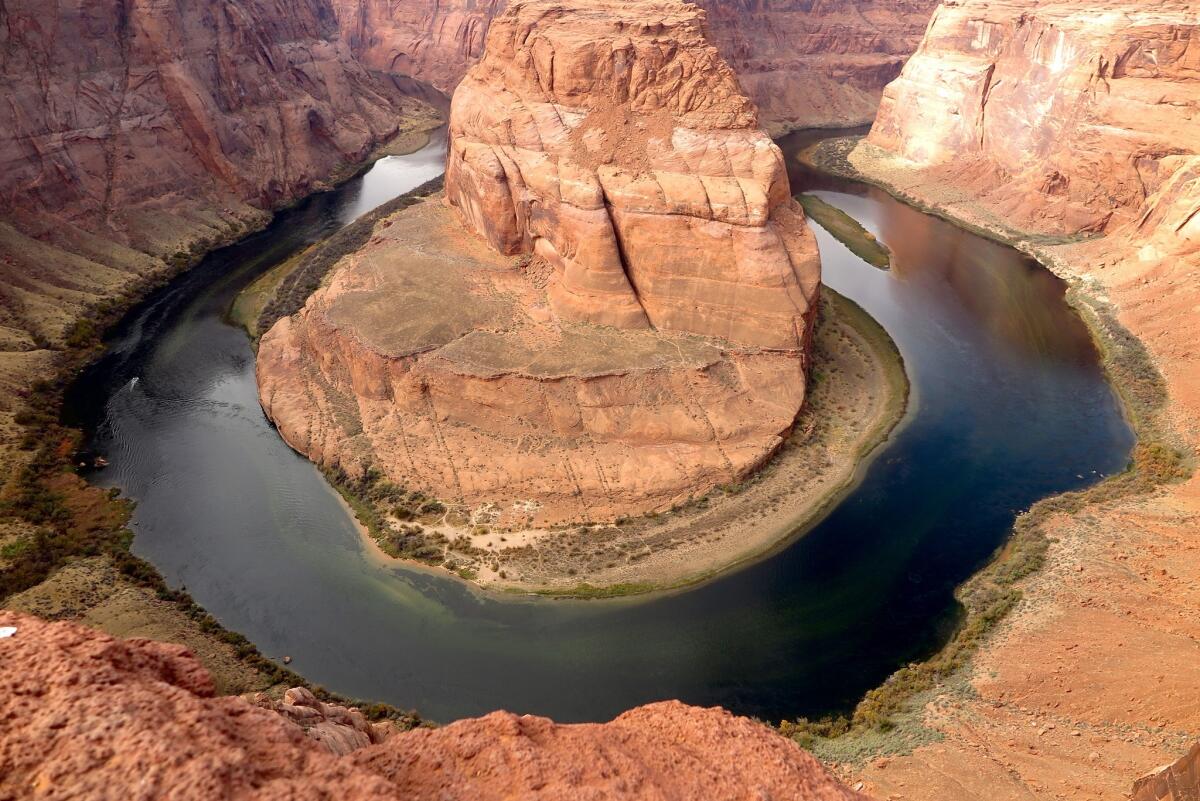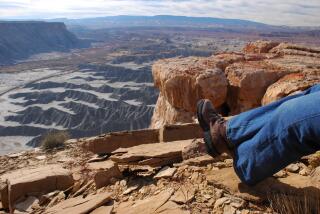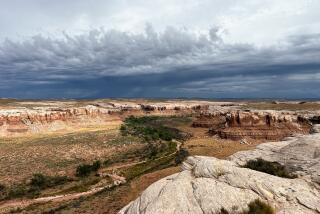How Interior Secretary Ryan Zinke prompted a mass resignation from his National Park Service Advisory Board

Reporting from Salt Lake City — Few groups have been closer and more involved in Interior Department policy and management than the National Park System Advisory Board, an appointed and nonpartisan group established 83 years ago to consult on department operations and practices.
So it came as a shock this week when nine of the board’s 12 members abruptly resigned in protest, complaining that Interior Secretary Ryan Zinke had disregarded their requests to meet at least once, a circumstance no other Park System Advisory Board had encountered.
For the record:
3:50 p.m. Jan. 18, 2018An earlier version of this article said Interior Secretary Ryan Zinke had been a congressman from Wyoming. He represented Montana.
“We were deeply disappointed with the department’s actions in dealing with us,” said former Alaska Gov. Tony Knowles, a Democrat who served as the board’s chairman. “Advisory board advice can be accepted or ignored. The fact they suspended the board and there were no meetings on issues of climate and science, no meetings on finding ways to help underrepresented groups visit the parks. Those were the programs we’d spent years working on with previous secretaries. Those were the programs we wanted to discuss with the new secretary and keep the momentum going.”
“We started talking last summer,” said Gretchen Long, an advisory board member from Wyoming who was appointed in 2010. “Is there any point to continuing to serve? We wanted to make a statement to the American public about the direction the department is taking and the stewardship of our parks and public land. These treasures are in trouble because of the actions the department has taken.”
She added that the board “encountered a lack of understanding that is appalling.”
The Interior Department did not respond to requests for comments from the secretary or a senior department leader.
In March, when he rode on a horse to his first day as secretary, Zinke sought to distinguish himself as a Cabinet member prepared, like the president, to be visible and disruptive. It was not clear at the time that he would manage the $13 billion-a-year department and its more than 60,000 employees with a tight executive circle far from public view.
Theresa Pierno, the chief executive of the National Parks Conservation Assn., a separate, nonprofit advocacy organization, said she and her colleagues had experienced the same difficulties in attracting the Interior secretary’s attention. In an interview on Wednesday, she said Zinke is the first Interior secretary to refuse to meet with her organization’s executives to discuss the operation and condition of national parks since the NPCA was founded in 1919 by Stephen Mather, the first National Park Service director.
“We haven’t been able to even have a conversation with them,” Pierno said. “The conservation community in general has not been invited in. Why wouldn’t you want to hear from an organization that has the history, the expertise like the NPCA? We’re nonpartisan. We have Republicans and Democrats on our board. There’s really no rational answer.”
Aside from marquee public events to announce changes in energy policy and public lands management, along with shrinking the boundaries of two national monuments in Utah, Zinke has kept a low public profile. But armed with presidential executive orders, departmental reports and conservative principles and values, he’s undertaken a major shift in his department’s operating program.
He eliminated climate science from programs to better manage the department’s 500-million-acre domain. He overturned a ban on coal mining on public lands and limited the reach of environmental safeguards for oil and gas leasing and development.
This month he opened nearly all of the outer continental shelf to oil exploration, although five days later he excused Florida’s Atlantic and Gulf shorelines from the offshore drilling plan.
At the National Park Service, the department’s largest division, Zinke proposed to more than double the entrance fees to popular parks, a move that could hinder the agency’s long-running efforts to encourage more minorities to visit some of the country’s most beautiful landscapes.
Zinke’s supporters in and outside the administration credit the 56-year-old former Republican congressman from Montana with eliminating what they viewed as aggravating restrictions and restoring the department’s traditional role in managing public land for multiple uses.
“The president promised the American people that their voices would be heard and that we would prioritize American interests,” Zinke said in a year-end statement that cataloged the most important accomplishments he’d supervised. “This year the Department of the Interior has made good on those promises. We are striking the right balance to protect our greatest treasures and also generate the revenue and energy our country needs.”
Across the country, the department’s policies are viewed differently by conservation groups, many mayors and governors, and innumerable residents. They assert that Zinke has installed management and oversight practices that needlessly put national parks, wildlife refuges, recreation areas, and monuments in harm’s way.
The approach has also been different from what President Trump said he was intent on pursuing. In early December, while announcing his decision to shrink the boundaries of Utah’s Bears Ears and Grand Staircase-Escalante national monuments, Trump told an audience in Salt Lake City that his administration was open to extensive citizen involvement in public lands decisions. “Under my administration, we will advance that protection through a truly representative process, one that listens to the local communities that knows the land the best and that cherishes the land the most.”
Under Zinke, though, the Interior Department has been dismantling public lands initiatives recommended by citizen groups representing local governments, land users, recreational industry representatives, Native Americans, and environmental organizations. In 2010, for instance, the Obama administration established what it called a “master leasing program,” a collaboration between the Bureau of Land Management and local governments, businesses, and citizen groups.
The idea was to help the BLM incorporate better environmental safeguards in its oil and gas leasing auctions in western states. In 2017, Zinke ordered an end to the program.
Another indication of Zinke’s different approach from previous Interior secretaries is how many executive level Interior Department positions are not filled. The National Park Service, for instance, does not have a director and the administration has not nominated a candidate. The National Parks Conservation Association says it is the first time that has occurred since the National Park Service was established in 1916.
ALSO
Trump has big plans for offshore oil development. But will it ever happen?
Trump plan to expand oil and gas leasing in West draws, for the most part, a big yawn from industry
This is the test Trump’s doctor says the president aced. How well can you do?
More to Read
Sign up for Essential California
The most important California stories and recommendations in your inbox every morning.
You may occasionally receive promotional content from the Los Angeles Times.










